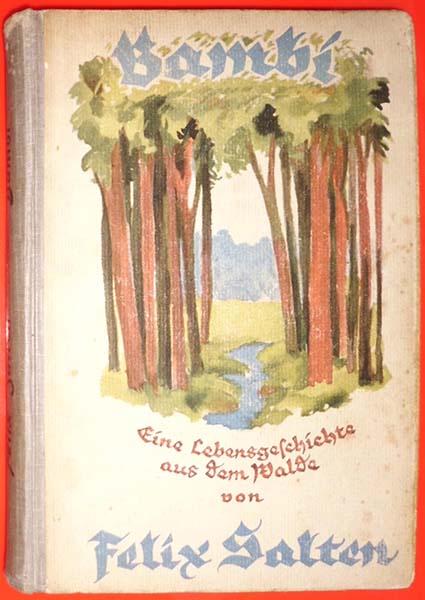


“It’s quite evident,” says Zipes, “that the shooting and the treatment of the animals are an allegory of the situation Jews found themselves in at that time.” While the moral of the Disney film might be that hunting animals is wrong, Salten’s message seems to be more that hunting humans is wrong. “How do we deal with our loneliness? How do we deal with life in a brutal situation?” Zipes’s translation reinstated the anthropomorphism found in the original, but softened in the first English translation in 1928, to show how Salten used his animal characters to make points about humankind. Salten’s ending has “a very deep meaning” says Jack Zipes, translator of Princeton University Press’s 2022 edition. But this stag then dies, leaving Bambi not surrounded by a happy family, as in Disney’s version, but completely alone. Bambi’s mother and his cousin Gobo (replaced by Thumper the rabbit in the film) are both slain, while Bambi is shot too, only to be saved by the stag implied to be his father. While the threat of being hunted is a memorable feature of the film – leading Stephen King to call it the first horror movie he ever saw – this danger looms much larger in Salten’s work.

Timely … Love Island’s Molly-Mae Hague and baby Bambi. Salten was affronted, writing to his US publisher: “I beg you most urgently, quite apart from softenings, not to advertise my work as a children’s book or to launch it otherwise in such a way.” But Disney was not the first to market the deer’s plight as a children’s story: the 1939 English-language translation of Bambi’s Children, Salten’s sequel, toned down the violence and gore, to be more child-friendly. Bambi: A Life in the Woods initially appeared in 1922, as a serialisation in the Viennese newspaper Neue Freie Presse, before being published as a book the following year. Perhaps the most crucial difference between Salten’s novel and Disney’s film, however, is that the former was aimed at adults. Faline – Bambi’s love interest and also, in the book, his cousin – appears in both, but she and Bambi are estranged by the end of the original, not living as a happy family as Disney has it.

While Salten’s Bambi was far from the cutesy romantic hero of the Disney film, both versions see the eponymous fawn learning about the natural world, losing his (yes, his) mother after she is shot by a hunter, then growing into an adult. Forthcoming horror film Bambi: The Reckoning will recast the beloved fawn as a vicious killing machine


 0 kommentar(er)
0 kommentar(er)
